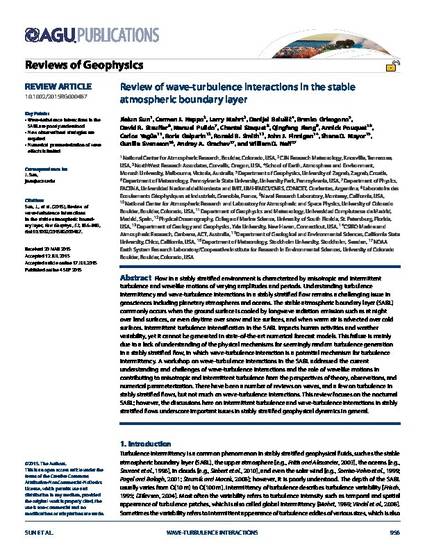
- waves,
- turbulence,
- wave-turbulence interaction,
- atmospheric boundary layer,
- stably stratifed flows
Flow in a stably stratified environment is characterized by anisotropic and intermittent turbulence and wavelike motions of varying amplitudes and periods. Understanding turbulence intermittency and wave-turbulence interactions in a stably stratified flow remains a challenging issue in geosciences including planetary atmospheres and oceans. The stable atmospheric boundary layer (SABL) commonly occurs when the ground surface is cooled by longwave radiation emission such as at night over land surfaces, or even daytime over snow and ice surfaces, and when warm air is advected over cold surfaces. Intermittent turbulence intensification in the SABL impacts human activities and weather variability, yet it cannot be generated in state-of-the-art numerical forecast models. This failure is mainly due to a lack of understanding of the physical mechanisms for seemingly random turbulence generation in a stably stratified flow, in which wave-turbulence interaction is a potential mechanism for turbulence intermittency. A workshop on wave-turbulence interactions in the SABL addressed the current understanding and challenges of wave-turbulence interactions and the role of wavelike motions in contributing to anisotropic and intermittent turbulence from the perspectives of theory, observations, and numerical parameterization. There have been a number of reviews on waves, and a few on turbulence in stably stratified flows, but not much on wave-turbulence interactions. This review focuses on the nocturnal SABL; however, the discussions here on intermittent turbulence and wave-turbulence interactions in stably stratified flows underscore important issues in stably stratified geophysical dynamics in general.
Reviews of Geophysics, v. 53, issue 3, p. 956-993
Available at: http://works.bepress.com/boris-galperin/52/
